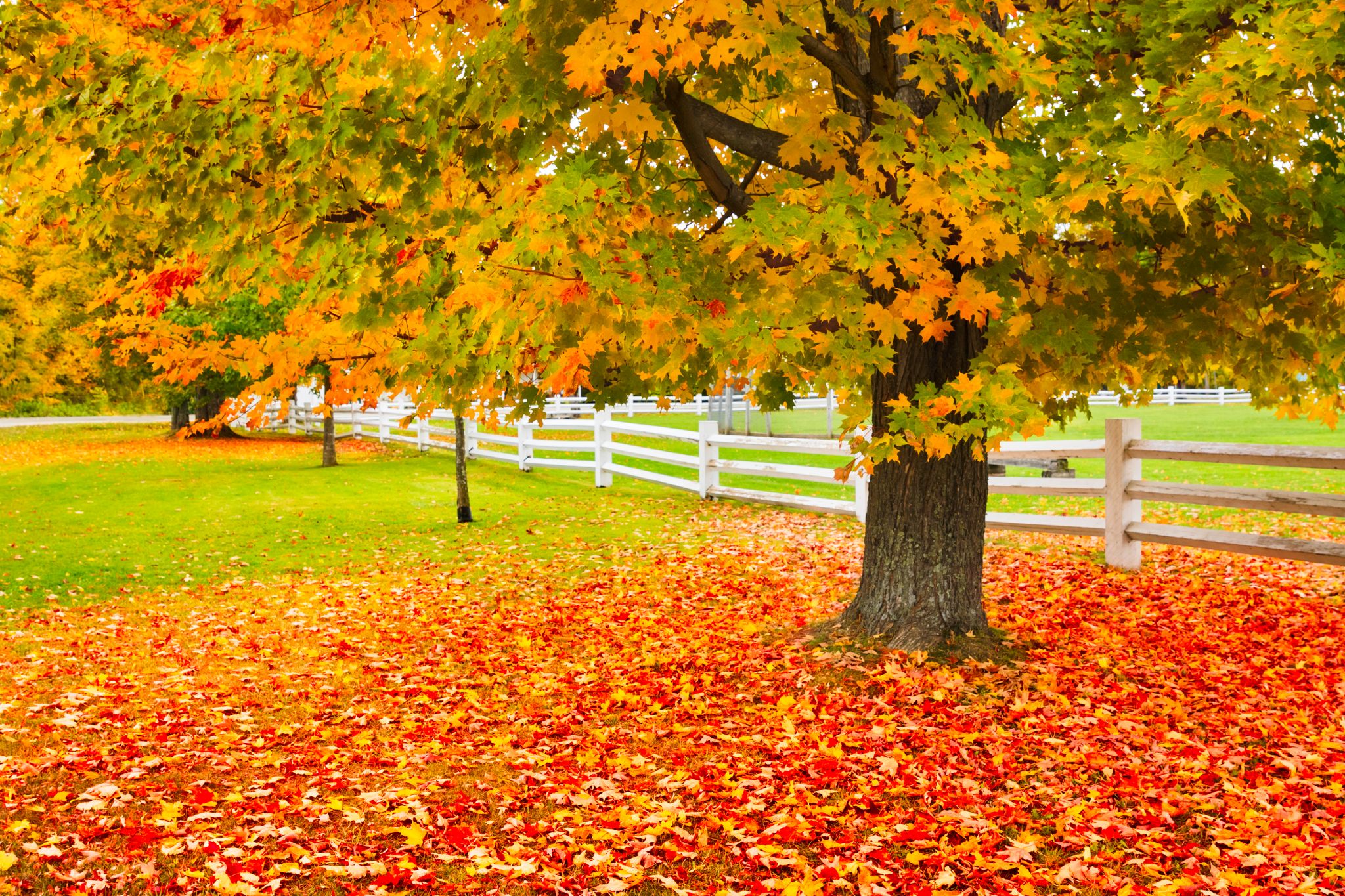While plenty of trees look great in the spring and summer, there are also some select species that bring color to your property as the colder months begin.
Let's look into fall trees that make a great addition to your home's autumn landscape, as well as why planting autumn trees may be a good idea for your property's overall atmosphere and curb appeal.
9 Fall Trees to Consider
These fall trees are all great choices for autumn colors, and some may even add to the look of your home's exterior when spring returns.
#1 Japanese Maple
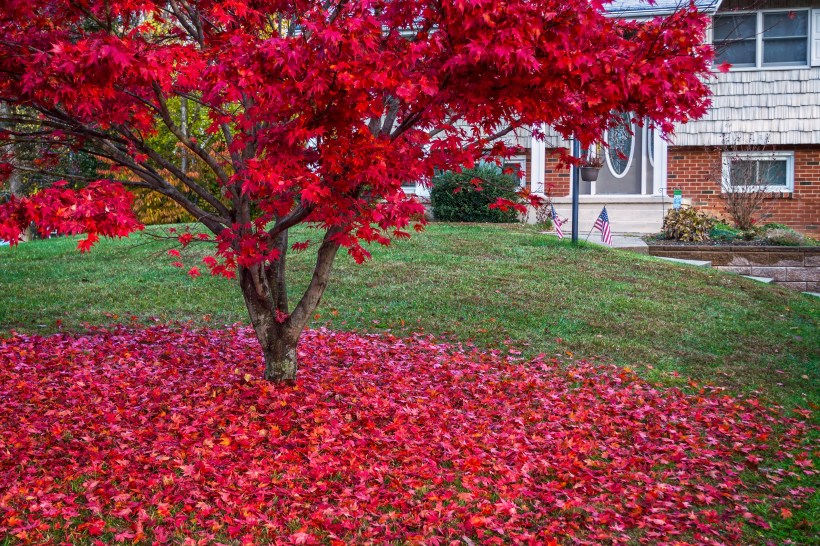
Height: 15 feet to 25 feet
Spread: 20 feet
Zones: 5 through 8
Fall color: Maroon to orange
Care: Plant in dappled shade so delicate leaves won’t burn in summer; the soil isn’t an issue; keep moisture consistent, especially during dry spells.
Value add: Slow growing (it won’t outgrow its home); great planted alone or in groups; songbirds, squirrels, and chipmunks love the seeds.
With its lacy leaves that turn shades of red, orange, and yellow in the fall, Japanese maples come in various shapes and sizes.
#2 Vine Maple
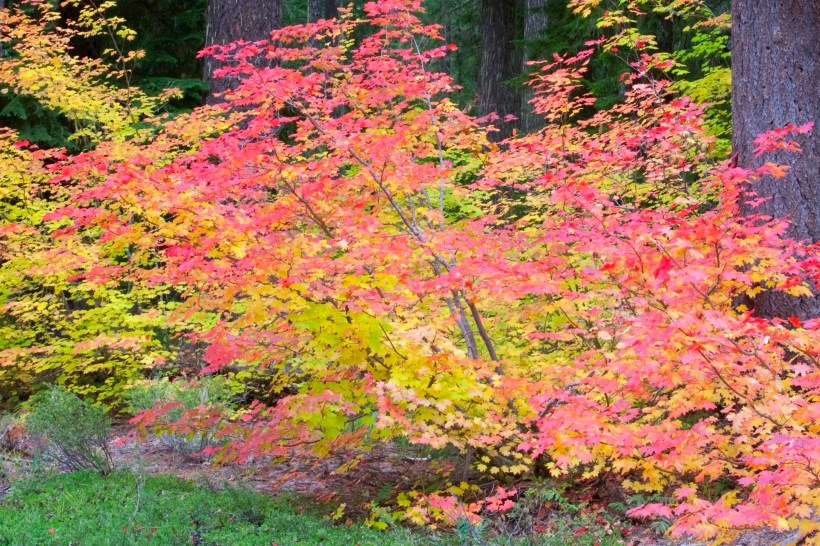
Height: 15 feet
Spread: 20 feet
Zones: 6 through 9
Fall color: Yellow, orange, red
Care: Plant in shade (though it will take full sun); keep soil moist; prune often to prevent branches from running wild.
Value add: Unusual arching and twisting branches that provide year-round interest and curb appeal; good for urban gardens and large containers; usually pest- and disease-free.
The vine maple is a Pacific Northwest native with vibrant autumn foliage. It’s a perfect choice if you’re looking for a tree that offers both beauty and resilience, thriving in a variety of conditions.
#3 Viburnum
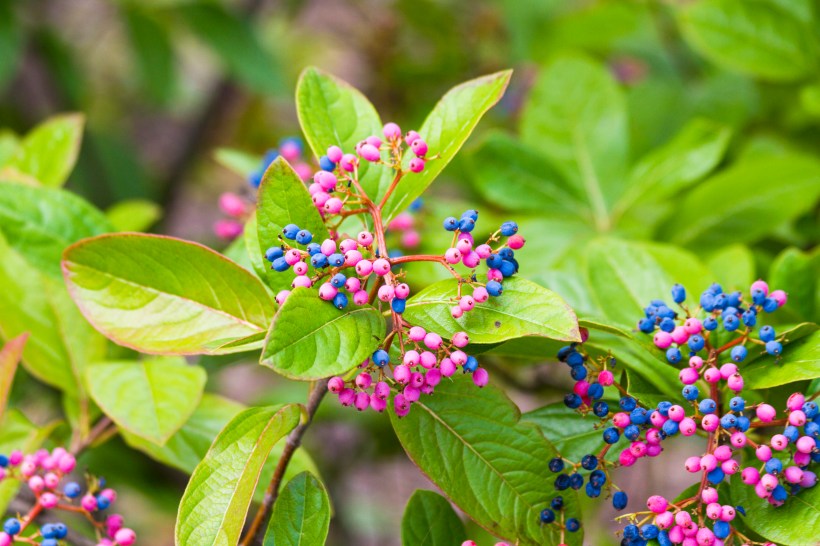
Height: 6 feet to 10 feet
Spread: 6 feet to 10 feet
Zones: 5 through 9
Fall color: Maroon to red-purple
Care: Plant in partial shade to full sun; moist loam is ideal, but a wide range of soil types will work.
Value add: Versatile tree; good as an accent, foundation, border, or street-side planting; edible (but acidic) blue-purple berries.
Viburnums provide lush, green foliage and clusters of fragrant white or pink flowers in the spring. Come fall, their leaves turn a stunning array of colors, from deep reds to purples.
#4 Paper Birch
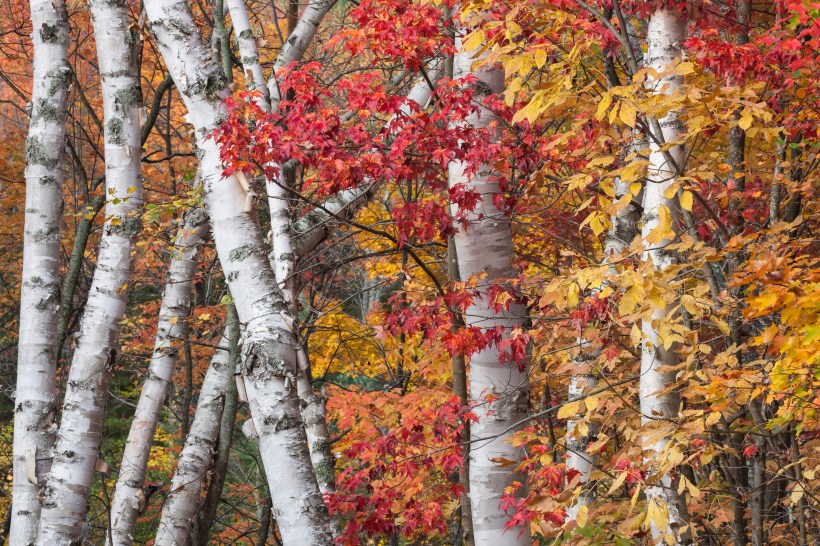
Height: 50 feet to 70 feet
Spread: 35 feet
Zones: 2 through 7
Fall color: Bright yellow
Care: Keep moist and mulched, especially in high heat and low-water conditions.
Value add: Year-round interest from dark red bark on young stems that turns cream-white on mature trunks; tap the trunk in spring for sap you can use in beer, syrup, or vinegar.
Paper birch adds a touch of rustic charm and elegance to any yard. Its leaves turn a bright yellow in the fall, creating a dazzling contrast against the white bark.
#5 Sugar Maple
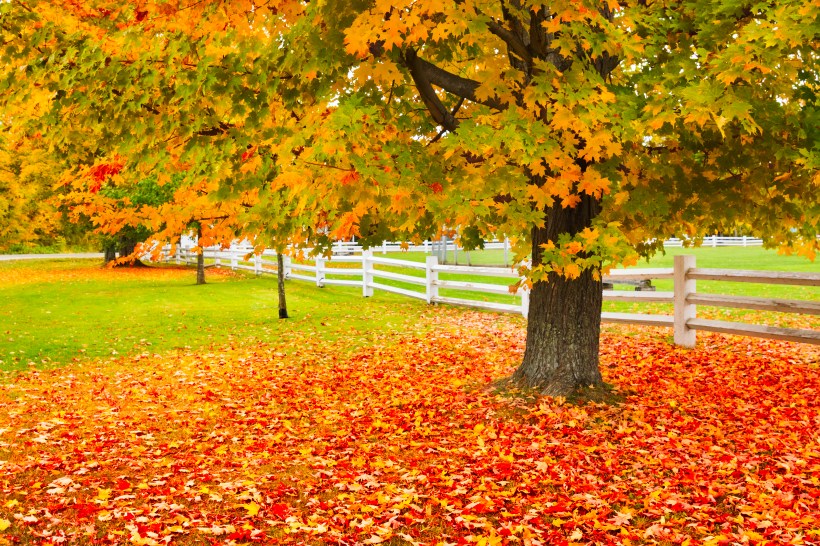
Height: 60 feet to 75 feet
Spread: 40 feet to 50 feet
Zones: 3 through 8
Fall color: Red, orange, gold
Care: Plant in fertile, moist, well-draining soil; avoid planting near streets, because the tree is salt sensitive.
Value add: Long-living, up to 500 years; lots of shade from its dense crown; sap in spring can be used for syrup.
The sugar maple is a classic go-to tree for fall colors. Its leaves transform into fall foliage in reds, oranges, and yellows.
#6 Smoketree
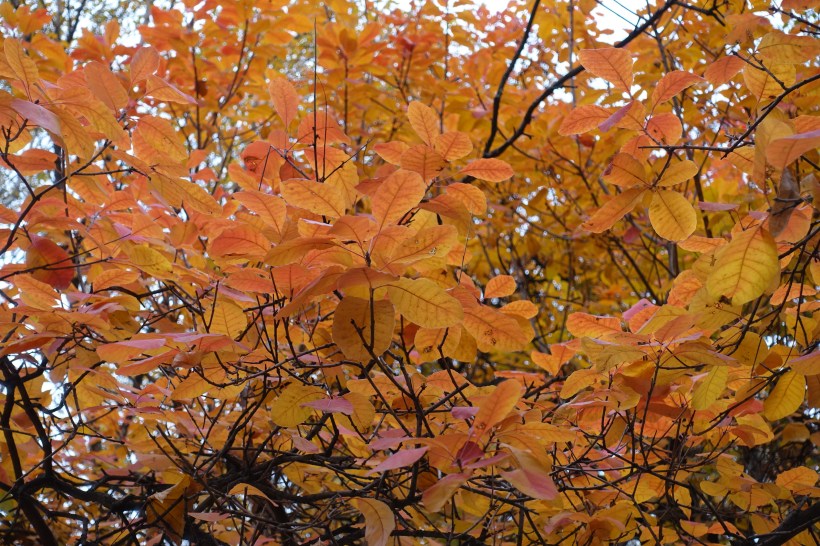
Height: 10 feet to 15 feet
Spread: 12 feet
Zones: 4 through 8
Fall color: Magenta and purple
Care: Plant in diverse, well-draining soil; a sunny location is best.
Value add: Deer resistant; is stunning as an accent tree or in a colorful shrub border; unusual wispy pink blooms appear in spring.
Smoketree gets its name from the wispy, smoke-like plumes that appear after it blooms. The foliage ranges from deep purples to vibrant oranges, depending on the variety.
#7 Katsura Tree

Height: 40 feet to 60 feet
Spread: 25 feet to 60 feet
Zones: 4 through 8
Fall color: Orange, gold, red
Care: OK, this one needs some special care like protection from wind and hot afternoon rays. But it's unusual, open spread of up to 60 feet makes it worth the effort.
Value add: Fallen leaves can smell like cinnamon or burnt sugar — yummy!
Katsura trees boast heart-shaped leaves that emerge with a reddish-purple tint in the spring, turn blue-green in the summer, and finally morph into a spectacular display of yellow and apricot in the fall.
#8 Sourwood
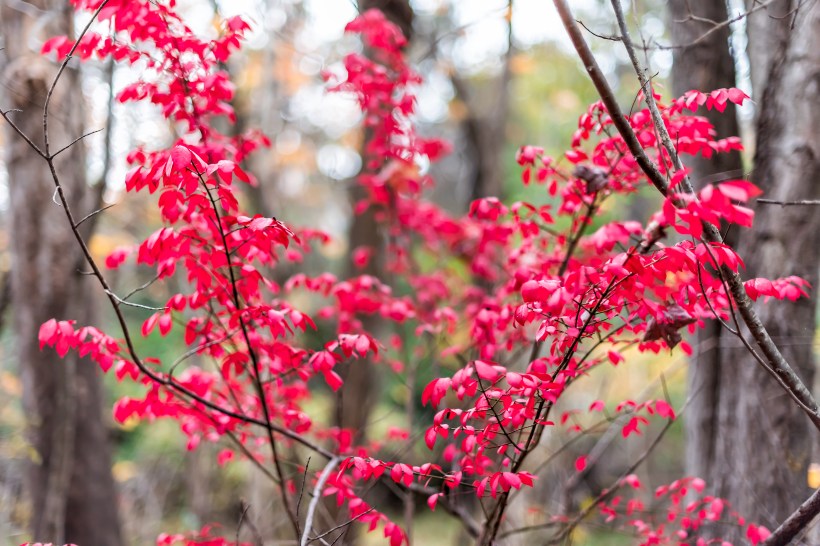
Height: 25 feet to 30 feet
Spread: 20 feet
Zones: 5 through 9
Fall color: Scarlet, purple foliage; silvery capsules
Care: Plant in acidic and rich soil; keep moist.
Value add: Capsules provide winter interest, too; tree attracts bees that produce prized sourwood honey.
The sourwood tree is a delightful addition to any yard. It offers year-round interest with its glossy green leaves, delicate white summer flowers, and brilliant fall colors that range from red to purple.
#9 Scarlet Oak
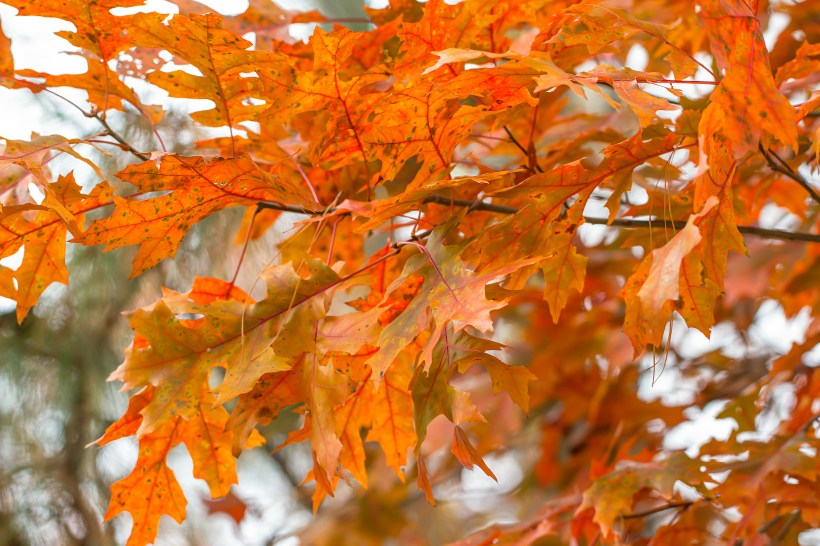
Height: 50 feet to 70 feet
Spread: 40 feet to 50 feet
Zones: 4 through 9
Fall color: Bright scarlet
Care: Plant in dry-to-average, well-draining soil; sandy conditions will work. Give it plenty of room to grow.
Value add: Fast growing; acorns can be ground and used to thicken stews; large songbirds and wild turkeys love it.
The scarlet oak’s deeply lobed leaves turn a vivid scarlet in the fall, creating a fiery display that’s hard to miss. This tree grows tall and strong, providing excellent shade and a stately presence.
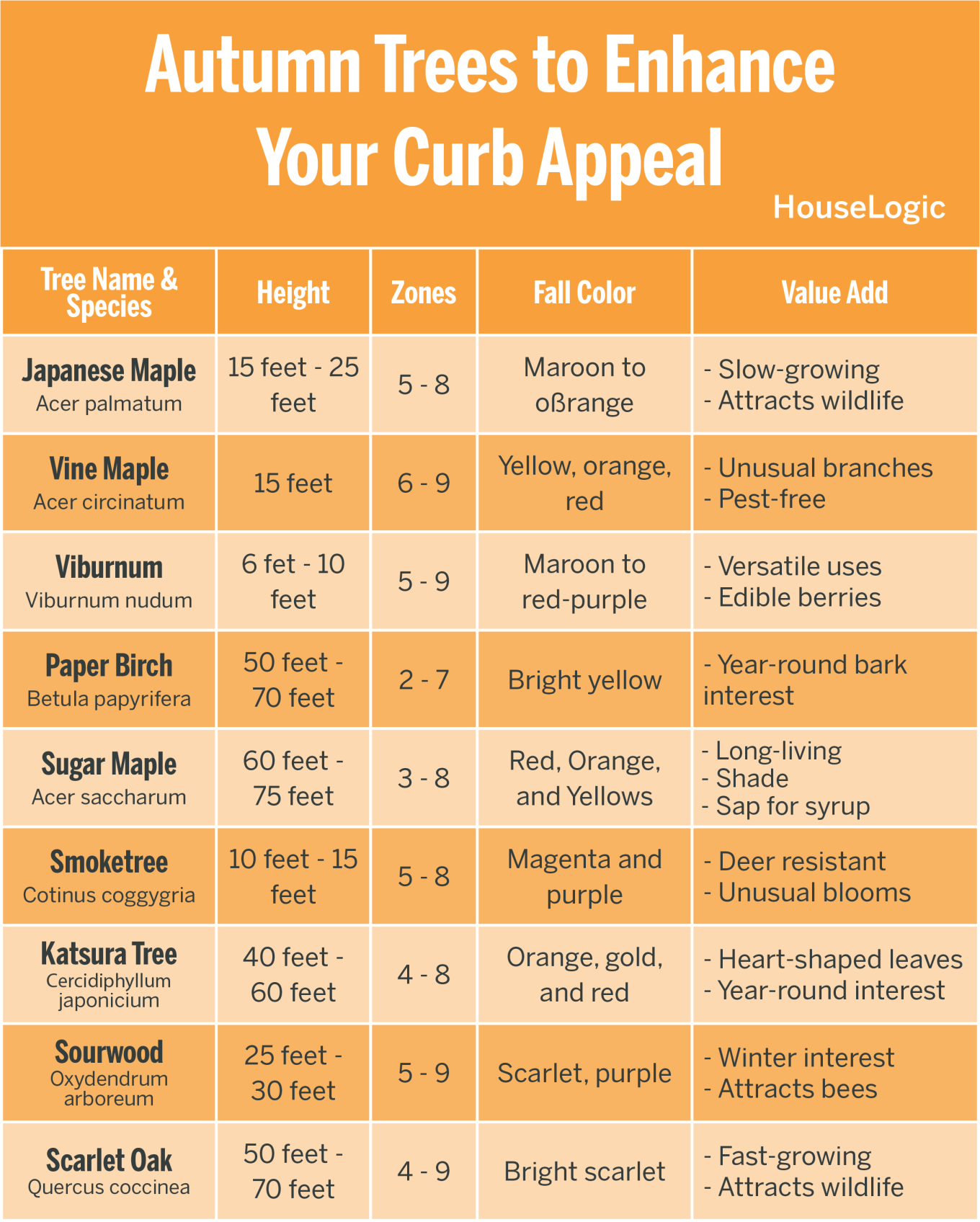
Autumn Trees and Curb Appeal
Curb appeal is all about the first impression your property's exterior makes on a potential buyer. Proper landscaping and maintenance are important to a property's curb appeal year-round, but autumn can be a difficult time for a front yard to look its best. Some flowers may have stopped blooming, and grass may be starting to change color.
Colorful autumn trees can serve the same purpose as thoughtful spring or summer landscaping: They can help make a great first impression, draw attention to your home’s best features, and may even make your house look bigger and more inviting.
Fall Trees and Seasonal Landscaping
The importance of landscaping doesn't end with curb appeal. Homeowners who spend quality time in their backyards during the fall and winter months may want their landscaping to look great throughout the year. While options may be fewer as the warmer months end, autumn trees offer a reliable way to add to your backyard's look as the seasons change. Additionally, fall trees and shrubbery can be used to add a seasonal accent to backyard additions or features, such as gazebos, pergolas, or porches.
